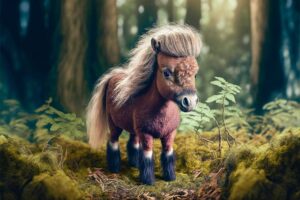Famous Horses in Mythology
Horses feature prominently in the mythology and folklore of cultures worldwide, symbolising strength, courage and freedom and, often, being blessed with mystical powers, such as flight, speech or the ability to transcend heaven and hell. Arguably the most famous mythological horse of all was Pegasus, the winged white stallion of Greek mythlogy. He sprang from the blood that spurted from the neck of Medusa, the only mortal Gordon, when she was decapitated by Perseus. Later tamed by Bellepheron, who used him defeat the fire-breathing Chimera – part lion, part goat and part dragon – Pegasus eventually became a servant of Zeus, the chief Greek deity.
Less well-known, perhaps, is Pegasus’ counterpart in Turkic mythology, the Heavenly Horse, or Tulpar. A magnficient black or white horse, he, too, has a a pair of feathered wings and epitomises speed, strength and loyalty. A mainstay of Kazakh oral tradition – indeed the Emblem of Kazakhstan featues two winged horses – the Tulpar is often the companion of epic heroes, such as Alpamis.
Horses are also prevalent in Old Norse mythology. Sleipnir, the magical eight-legged horse ridden by Odin, the supreme god and creator, was purportedly born of the union between the stallion Svaðilfari and the shape-shifting Loki, the god of mischief, in the form of a mare. Described
“the best horse among gods and men”, Sleipnir is blessed with the ability to gallop through the air and over the sea. Elsewhere in Norse mythology, the Sun was created by sparks from Muspelheim, the realm of fire and heat, but required the sun deity, Sól, to drive it across the sky each day in a chariot. The chariot was pulled by two horses, Árvakr and Alsviðr, fitted with bellows beneath their shoulders to protect them from the heat.
Speaking of chariot horses, in the Ulster, or Red Branch, Cycle of Irish mythology, Liath Macha and Dub Sainglend are two such horses belonging to hero and demigod Cú Chulainn. A divine gift, from Macha, goddess of war, or her sister, the Morrigan, goddess of death, they supposedly sprang from Linn Laith in Sliabh Fuait, a mountain range in Co. Armagh, and were subsequently tamed by Cúchulainn.
 Human fascination with horses is ancient and has only increased since they were first domesticated, five or six millenia ago, not least because of their ability to form deep connections with people. The advent of moving pictures, in the late nineteenth century, provided another outlet for the portrayal of horses and horsemanship.
Human fascination with horses is ancient and has only increased since they were first domesticated, five or six millenia ago, not least because of their ability to form deep connections with people. The advent of moving pictures, in the late nineteenth century, provided another outlet for the portrayal of horses and horsemanship. The first animated cartoons appeared in the first decade of the twentieth century and it’s fair to say that cartoon horses weren’t far behind. Horace Horsecollar, for example, was one of the earliest animated characters created by Walt Disney, making his silver screen debut, as regular domesticated horse, in ‘The Plowboy’ (1929). Recognisable by his trademark headcollar, overalls, bow tie and bowler hat, he quickly evolved anthropomorphic traits – not least being an attention-seeking showoff – and, along with his girlfriend, Clarabelle Cow, played a supporting role to Mickey and Minnie Mouse.
The first animated cartoons appeared in the first decade of the twentieth century and it’s fair to say that cartoon horses weren’t far behind. Horace Horsecollar, for example, was one of the earliest animated characters created by Walt Disney, making his silver screen debut, as regular domesticated horse, in ‘The Plowboy’ (1929). Recognisable by his trademark headcollar, overalls, bow tie and bowler hat, he quickly evolved anthropomorphic traits – not least being an attention-seeking showoff – and, along with his girlfriend, Clarabelle Cow, played a supporting role to Mickey and Minnie Mouse.